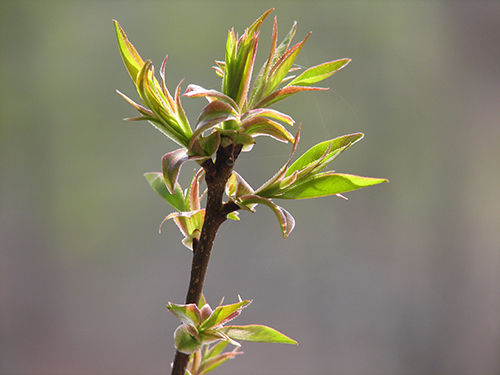
Phenology Happenings: Butterflies in Winter
(Photos and story by Diane De Luca) In the early days of spring, we are often greeted with the first emergence of the Mourning Cloak butterfly. What a gift as

by Diane De Luca
Climate change researchers predict that rising global temperatures will dramatically impact ecosystems and many of the species they support. One such change that will undoubtedly affect many plants and animals is disruption of their phenology, or life cycle phases (phenophases), such as leafing, flowering, emergence of insects and arrival of migratory birds. In 2005, researchers across the country gathered at a workshop to establish a nationwide network of phenological studies.
The resulting USA National Phenology Network is a collaborative framework of agencies, educational institutions, non-governmental organizations, citizen volunteers and many others.
The Network establishes protocols for monitoring the various “phenophases”, such as when the first flower and first leaf appear on a lilac, and provides a web site to record the data. Phenological monitoring focuses on a wide range of plant and animal species and participants include individuals of all ages and backgrounds. Phenological data enables researchers to determine which species are most vulnerable to climate change, how these species’ populations will respond over time and how these changes may affect other species and overall ecosystems.
NH Audubon is documenting the phenology of plant and animal species on the Deering Wildlife Sanctuary in Deering, NH. The Sanctuary served as a pilot study site for testing the methodology and feasibility of phenological monitoring on other NH Audubon sanctuaries and we continue to gather important long term data at the Sanctuary. Objectives of the Phenological Monitoring Project include collection of phenological data on selected plant and animal species and recruiting and training of volunteers to participate in the project as citizen scientists.
Project Leader: Diane De Luca

(Photos and story by Diane De Luca) In the early days of spring, we are often greeted with the first emergence of the Mourning Cloak butterfly. What a gift as

(Photos and story by Diane De Luca) The gardens are alive with pollinators. Visitors, campers, and those of us who work in the gardens are all drawn to the activity

(Photos and story by Diane De Luca) Purple coneflower (Echinacea purpurea) is a native perennial that is a favorite in pollinator gardens. Each daisy-like flower head has florets that surround

(Photos and story by Diane De Luca) Frigid temperatures, a hard snow pack and a couple inches of fresh snow create the perfect conditions for observing tracks. I head out

(Phenology Happenings by Diane De Luca) The Deering Wildlife Sanctuary is rich in wetlands: ponds, marshes, wet meadows, forested swamps. Winding streams connect many of these water bodies across the

(Photos and story by Diane De Luca) As the leaves fall, and brown hues are dominant, the persistent green plants stand out. Even as the snow falls, the greens still
Climate change researchers predict that rising global temperatures will dramatically impact ecosystems and many of the species they support. One such change that will undoubtedly affect many plants and animals is disruption of their phenology, or life cycle phases (phenophases), such as leafing, flowering, emergence of insects and arrival of migratory birds. In 2005, researchers across the country gathered at a workshop to establish a nationwide network of phenological studies. The resulting USA National Phenology Network is a collaborative framework of agencies, educational institutions, non-governmental organizations, citizen volunteers and many others.

The Network establishes protocols for monitoring the various “phenophases”, such as when the first flower and first leaf appear on a lilac, and provides a web site to record the data. Phenological monitoring focuses on a wide range of plant and animal species and participants include individuals of all ages and backgrounds. Phenological data enables researchers to determine which species are most vulnerable to climate change, how these species’ populations will respond over time and how these changes may affect other species and overall ecosystems.
NH Audubon in planning a project to document the phenology of plant and animal species on the Deering Wildlife Sanctuary in Deering, NH. The Deering Sanctuary will serve as a pilot study site for testing the methodology and applicability of phenological monitoring on other NH Audubon sanctuaries. Objectives of the Phenological Monitoring Project include collection of phenological data on selected plant and animal species and recruiting and training of volunteers to participate in the project as citizen scientists.
To learn more about Phenological Monitoring visit the National Phenology Network at www.usanpn.org/
Notifications
